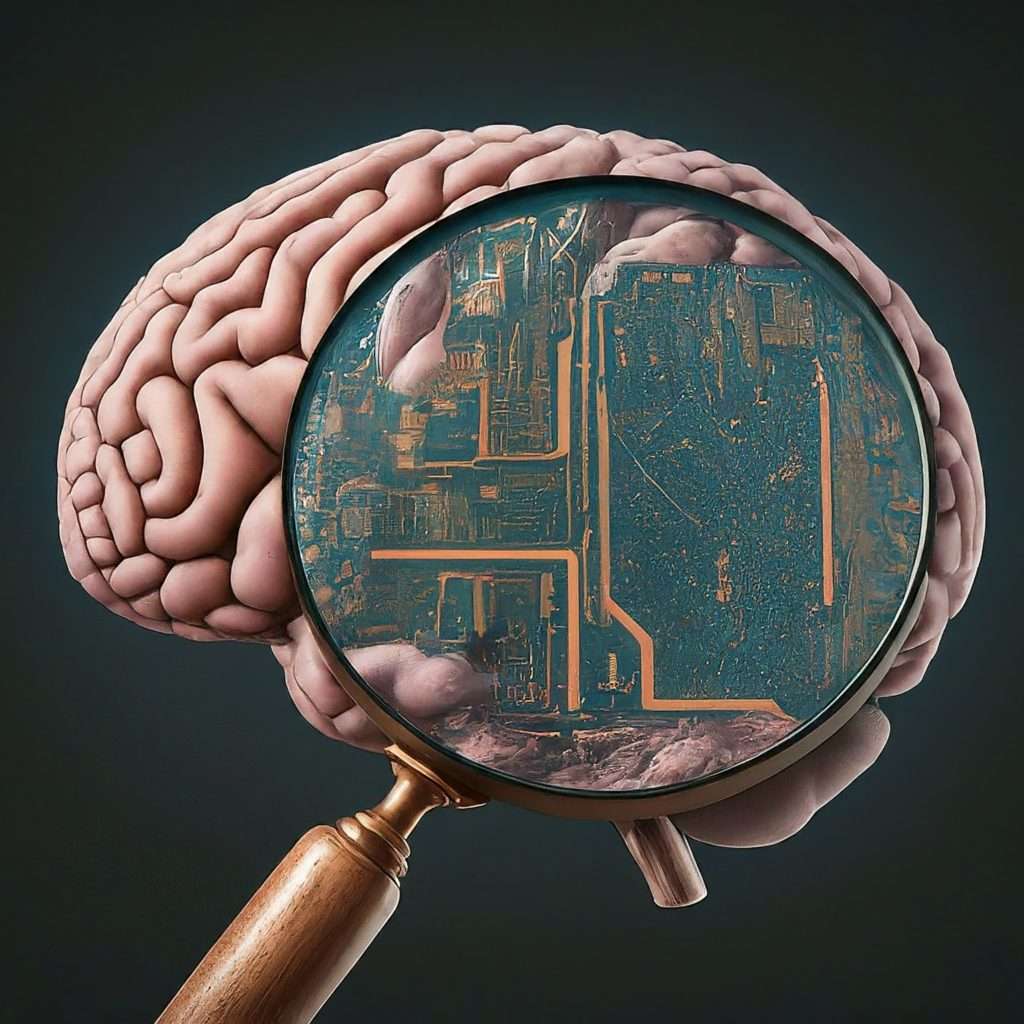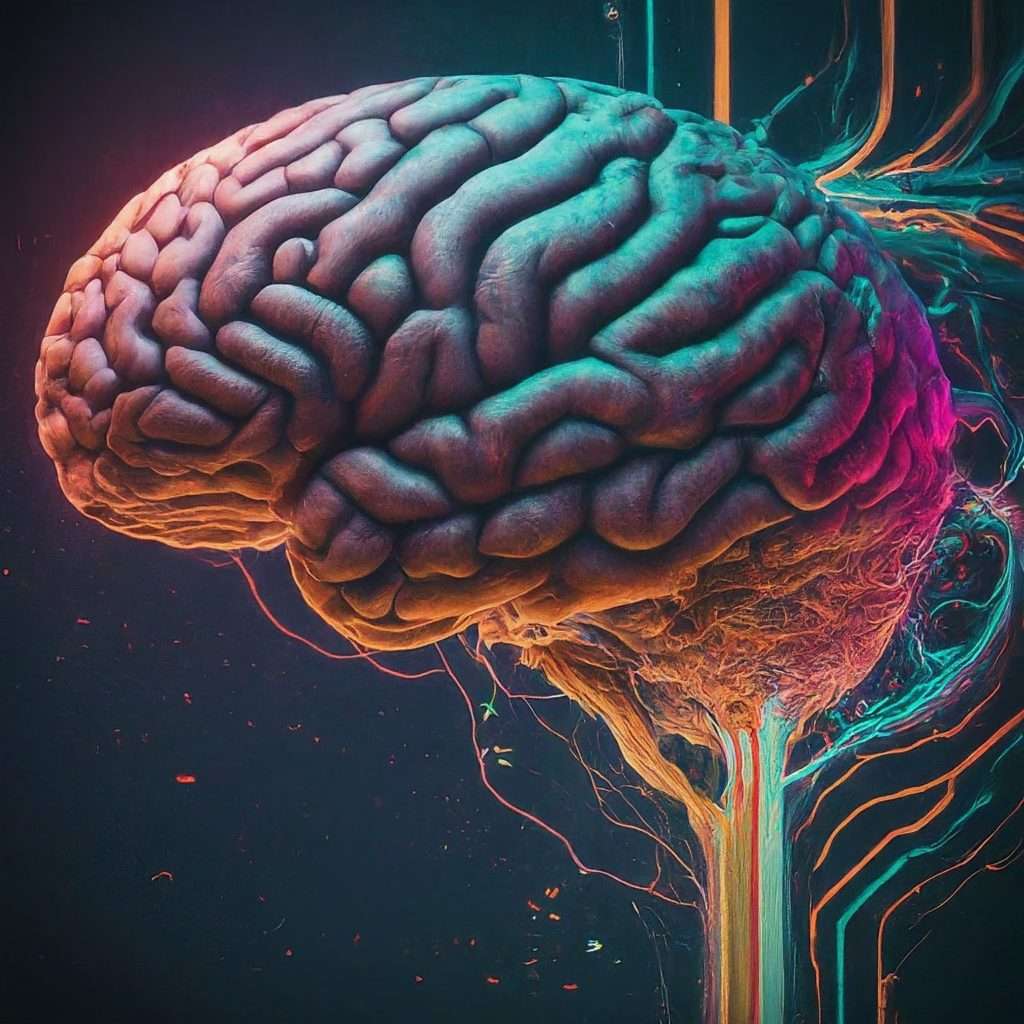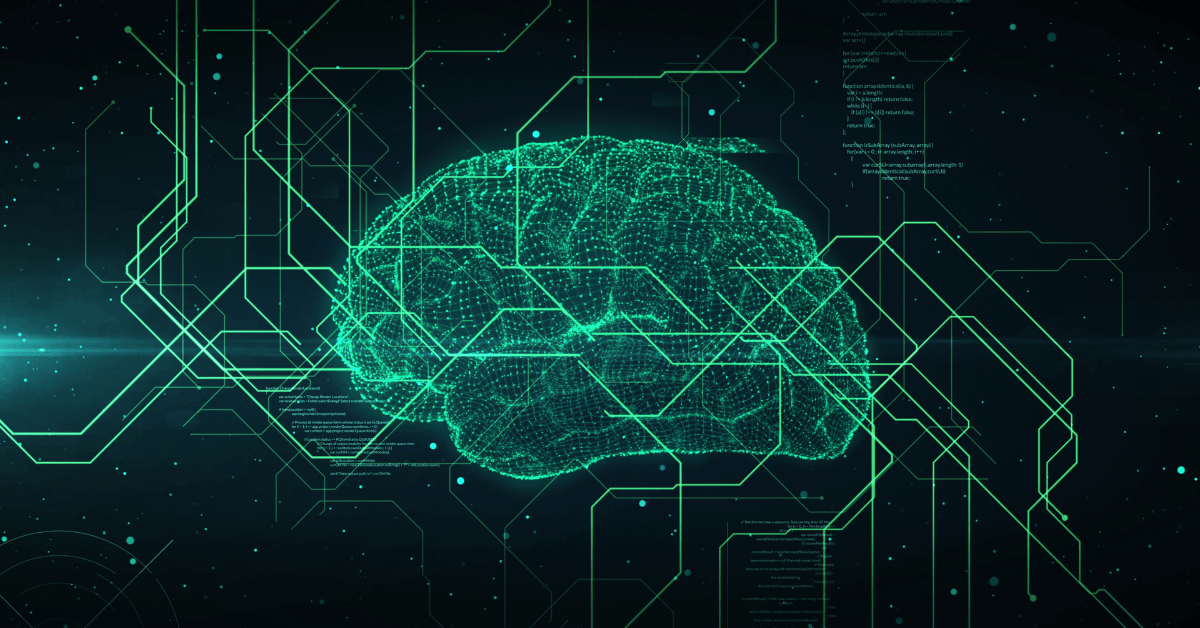I. Introduction
In the dynamic landscape of technology and neuroscience, the convergence of the human brain and artificial intelligence has become an area of intense exploration and fascination. This introduction sets the stage for delving into the intricate relationship between these two realms, shedding light on both their similarities and disparities in functionality.
A. Brief overview of the intersection between brain science and artificial intelligence:
The intersection of brain science and artificial intelligence represents a frontier where cutting-edge research in neuroscience and computer science intertwines. While the human brain has long been a subject of scientific inquiry, the rise of artificial intelligence has opened new avenues for understanding cognition and intelligence.

Advancements in AI, particularly in machine learning and neural network technologies, have enabled systems to mimic certain aspects of human intelligence, leading to groundbreaking applications in various fields, including healthcare, finance, and transportation.
B. Importance of understanding similarities and differences in their workings:
Understanding the similarities and differences between the human brain and artificial intelligence is crucial for several reasons. Firstly, it provides insights into the potential capabilities and limitations of AI systems, guiding researchers in the development of more efficient and robust algorithms.
Moreover, elucidating these parallels and disparities fosters interdisciplinary collaboration between neuroscientists, computer scientists, and ethicists, driving innovation in both fields. By deciphering the inner workings of the brain and AI, we can harness their combined potential to address complex challenges facing society, from healthcare disparities to environmental sustainability.
In the subsequent sections, we will embark on a journey to unravel the mysteries of the human brain and artificial intelligence, exploring their respective intricacies and uncovering the profound implications of their convergence. Through this exploration, we aim to gain a deeper appreciation for the marvels of the human mind and the transformative power of artificial intelligence.
II. Understanding the Brain
A. Neurological processes involved in cognition and decision-making:
The human brain, with its billions of neurons interconnected through trillions of synaptic connections, orchestrates a symphony of activity underlying cognition, perception, and decision-making. Neurological processes such as synaptic transmission, neurotransmitter release, and neural oscillations form the foundation of our cognitive abilities.
At the core of cognitive processes lie functions such as memory formation, attentional control, and executive function, orchestrated by intricate neural circuits distributed across different brain regions. These processes enable us to perceive, interpret, and respond to the world around us, shaping our thoughts, emotions, and behaviors.

B. Complexities of neural networks and synaptic connections:
The brain’s neural networks exhibit remarkable plasticity, allowing them to adapt and reorganize in response to experience and environmental stimuli. This plasticity underlies learning and memory processes, enabling us to acquire new skills, form memories, and navigate complex environments.
Synaptic connections, the communication links between neurons, play a pivotal role in information processing within the brain. Through mechanisms such as synaptic potentiation and depression, synaptic connections undergo dynamic changes, shaping the strength and efficacy of neural communication.
C. Limitations and capabilities of the human brain:
Despite its extraordinary capabilities, the human brain is not without limitations. Cognitive biases, perceptual illusions, and constraints in processing speed and capacity are inherent aspects of neural functioning. Furthermore, neurological disorders and injuries can impair cognitive function, highlighting the fragility of the brain’s intricate machinery.
Nevertheless, the human brain’s unparalleled adaptability and efficiency underscore its remarkable potential. From artistic creativity to scientific discovery, the human brain remains a source of inspiration and wonder, driving innovation and progress across diverse domains.
In unraveling the complexities of the brain, we gain a deeper appreciation for the intricacies of neural computation and cognition, laying the groundwork for understanding the parallels and disparities between the human brain and artificial intelligence.
III. Exploring Artificial Intelligence
A. Evolution of AI technologies and algorithms:
Artificial intelligence (AI) has undergone a remarkable evolution since its inception, transitioning from symbolic logic-based approaches to the era of machine learning and deep learning. Early AI systems relied on rule-based programming to simulate human reasoning and decision-making, albeit with limited success.
The advent of machine learning revolutionized AI by enabling systems to learn from data and improve performance iteratively. Techniques such as supervised learning, unsupervised learning, and reinforcement learning have propelled AI applications in diverse domains, from natural language processing to image recognition.
B. Key components of machine learning and deep learning systems:
Machine learning algorithms, the cornerstone of contemporary AI, leverage statistical techniques to extract patterns and insights from data. These algorithms encompass a diverse range of approaches, including support vector machines, decision trees, and neural networks, each suited to different types of tasks and data.
Deep learning, a subset of machine learning inspired by the structure and function of the human brain, has emerged as a dominant paradigm in AI research. Deep neural networks, characterized by multiple layers of interconnected nodes, excel at learning hierarchical representations of data, enabling breakthroughs in image recognition, speech synthesis, and autonomous driving.
C. Applications of AI across various industries and domains:
AI technologies have permeated virtually every sector of the economy, revolutionizing industries ranging from healthcare and finance to manufacturing and entertainment. In healthcare, AI-driven diagnostic tools and personalized treatment algorithms hold the promise of improving patient outcomes and reducing healthcare costs.
In finance, AI-powered trading algorithms analyze vast datasets in real-time to identify market trends and execute trades with unprecedented speed and accuracy. Similarly, in manufacturing, AI-enabled robotics and predictive maintenance systems optimize production processes and minimize downtime, enhancing efficiency and profitability.
The proliferation of AI applications underscores the transformative potential of artificial intelligence to reshape the way we live, work, and interact with the world. As AI continues to advance, it holds the promise of addressing some of humanity’s most pressing challenges while also posing ethical and societal implications that necessitate careful consideration and deliberation.
IV. Similarities Between Brain and AI
A. Parallel processing and distributed information:
Both the human brain and artificial intelligence systems exhibit parallel processing capabilities, enabling them to perform multiple tasks simultaneously and process vast amounts of information in parallel. In the brain, this parallelism arises from the interconnectedness of neurons within neural networks, allowing for efficient information processing across different brain regions.
Similarly, modern AI architectures, such as deep neural networks, leverage parallel computing techniques to accelerate training and inference tasks. By distributing computations across multiple processors or GPUs, AI systems can achieve remarkable speed and scalability, paralleling the brain’s ability to process information in parallel.
B. Learning and adaptation mechanisms:
Another striking similarity between the brain and AI lies in their capacity for learning and adaptation. The human brain learns from experience through mechanisms such as synaptic plasticity, where the strength of synaptic connections is modified in response to sensory input and feedback.
Likewise, AI systems learn from data through iterative training processes, adjusting model parameters to minimize prediction errors and improve performance. Techniques such as gradient descent and backpropagation enable neural networks to update their weights and biases in a manner akin to synaptic plasticity, enhancing their ability to generalize from past experiences to new situations.
C. Pattern recognition and problem-solving abilities:
Both the brain and AI excel at pattern recognition and problem-solving tasks, albeit through different mechanisms. In the brain, pattern recognition arises from the distributed processing of sensory information across specialized brain regions, such as the visual cortex for image recognition or the auditory cortex for speech processing.
Similarly, AI systems leverage sophisticated algorithms, such as convolutional neural networks (CNNs) and recurrent neural networks (RNNs), to extract features and patterns from complex datasets. These algorithms enable AI systems to perform a wide range of tasks, including image classification, natural language understanding, and autonomous decision-making, mirroring the brain’s ability to recognize patterns and solve problems in diverse domains.
By recognizing these similarities between the brain and AI, researchers can draw inspiration from nature to develop more biologically inspired AI architectures and algorithms. Moreover, understanding these parallels sheds light on the fundamental principles of intelligence, paving the way for advances in both neuroscience and artificial intelligence.
V. Differences Between Brain and AI
A. Biological vs. digital architectures:
One of the fundamental differences between the human brain and artificial intelligence lies in their underlying architectures. The human brain is a biological organ composed of neurons, glial cells, and synaptic connections, operating through electrochemical signals propagated along neural pathways.
In contrast, artificial intelligence systems are composed of digital components, such as transistors, logic gates, and memory units, organized into algorithms and computational models. While AI systems may mimic certain aspects of neural computation, they fundamentally differ from biological brains in their substrate and mode of operation.
B. Energy efficiency and computational speed:
Another notable difference between the brain and AI is their energy efficiency and computational speed. The human brain is remarkably energy-efficient, consuming only a fraction of the power required by conventional computing systems to perform similar tasks. This efficiency arises from the brain’s highly parallelized architecture and low-power signaling mechanisms.
In contrast, AI systems, particularly deep learning models running on conventional hardware, often require substantial computational resources and energy consumption to train and deploy. While advances in hardware acceleration, such as GPUs and TPUs, have accelerated AI performance, they still pale in comparison to the brain’s efficiency in terms of energy consumption and computational speed.
C. Consciousness and self-awareness:
Perhaps the most profound difference between the brain and AI lies in the realm of consciousness and self-awareness. While the human brain gives rise to subjective experiences, emotions, and self-awareness, AI systems lack the capacity for subjective consciousness and genuine understanding.
Although AI algorithms can exhibit remarkable capabilities in specific domains, they lack the intrinsic awareness and subjective experiences that characterize human consciousness. The question of whether AI systems can ever achieve consciousness remains a topic of philosophical debate, highlighting the profound disparities between biological and artificial forms of intelligence.
These differences underscore the unique strengths and limitations of both the human brain and artificial intelligence. While AI systems excel at specific tasks and can surpass human performance in certain domains, they remain fundamentally distinct from the nuanced complexity and consciousness of biological brains. Understanding these disparities is essential for responsibly harnessing the potential of AI while acknowledging the inherent uniqueness of human intelligence.
VI. Bridging the Gap
A. Challenges in emulating brain functionalities in AI systems:
Despite the remarkable progress in artificial intelligence, emulating the full range of functionalities exhibited by the human brain remains a formidable challenge. The brain’s extraordinary complexity, dynamic adaptability, and efficiency pose significant hurdles for AI researchers seeking to replicate its capabilities in digital form.
One of the key challenges lies in understanding the brain’s underlying mechanisms at a deeper level, including the dynamics of neural circuits, the principles of synaptic plasticity, and the integration of sensory and motor information. Moreover, bridging the gap between neuroscience and artificial intelligence requires interdisciplinary collaboration, integrating insights from biology, psychology, computer science, and engineering.
B. Potential solutions and research directions:
Addressing the challenges of bridging the gap between brain and AI necessitates innovative approaches and novel research directions. One promising avenue is the development of neuromorphic computing systems, inspired by the brain’s architecture and functioning. Neuromorphic hardware, characterized by spiking neural networks and event-driven processing, aims to emulate the brain’s parallelism, energy efficiency, and robustness.
Furthermore, advances in computational neuroscience, coupled with machine learning techniques, hold the promise of unraveling the brain’s mysteries and translating them into AI algorithms. By leveraging insights from neural circuitry, synaptic dynamics, and neural coding, researchers can develop more biologically plausible models of intelligence, paving the way for AI systems with enhanced cognitive capabilities.
C. Implications for future AI development and neuroscience research:
Bridging the gap between brain and AI has profound implications for the future of both artificial intelligence and neuroscience. On the one hand, AI technologies inspired by the brain’s principles could lead to more robust, adaptable, and human-like intelligent systems, with applications ranging from healthcare and education to robotics and autonomous vehicles.
On the other hand, insights gained from AI research can inform our understanding of the brain’s functioning and neural mechanisms, shedding light on fundamental questions in neuroscience, such as the nature of consciousness, learning, and memory. Moreover, by fostering interdisciplinary collaboration and knowledge exchange, we can accelerate progress in both fields, unlocking new frontiers of human understanding and technological innovation.
In summary, bridging the gap between brain and AI represents a multifaceted endeavor with far-reaching implications for science, technology, and society. By overcoming challenges, exploring new research avenues, and fostering collaboration across disciplines, we can unlock the full potential of artificial intelligence while deepening our understanding of the remarkable complexities of the human brain.
A. Impact of AI advancements on society and individuals:
The rapid advancement of artificial intelligence brings forth a myriad of ethical considerations that warrant careful examination. AI technologies have the potential to revolutionize industries, improve quality of life, and address societal challenges. However, they also raise concerns regarding job displacement, privacy infringement, and exacerbation of social inequalities.
Furthermore, AI-driven decision-making algorithms may inadvertently perpetuate bias and discrimination, reflecting the inherent biases present in the data used for training. This underscores the importance of ethical oversight and algorithmic transparency to mitigate the negative impacts of AI on vulnerable populations and marginalized communities.
B. Ethical dilemmas related to AI and brain-computer interfaces:
The intersection of artificial intelligence and brain-computer interfaces (BCIs) introduces unique ethical dilemmas pertaining to privacy, autonomy, and informed consent. BCIs, which enable direct communication between the brain and external devices, hold promise for medical applications such as prosthetics, assistive technologies, and neurological rehabilitation.
However, the use of BCIs raises concerns about potential breaches of privacy and autonomy, as well as the risk of unintended consequences, such as unauthorized access to neural data or manipulation of cognitive processes. Ethical frameworks must be established to ensure the responsible development and deployment of BCIs, safeguarding individuals’ rights and autonomy.
C. Responsible AI development and deployment practices:
Addressing the ethical implications of artificial intelligence requires a proactive approach to responsible AI development and deployment. This entails incorporating ethical considerations into every stage of the AI lifecycle, from data collection and algorithm design to deployment and monitoring.
Key principles such as fairness, transparency, accountability, and human-centered design should guide AI development efforts, ensuring that AI systems align with societal values and respect fundamental human rights. Moreover, interdisciplinary collaboration between technologists, ethicists, policymakers, and stakeholders is essential to navigate the complex ethical landscape of AI responsibly.
By prioritizing ethical considerations in AI research and practice, we can harness the transformative potential of artificial intelligence while upholding ethical standards and safeguarding the well-being of individuals and society as a whole. Only through thoughtful deliberation and ethical foresight can we ensure that AI serves as a force for positive change and progress in the years to come.
VIII. Conclusion
In navigating the intricate relationship between the human brain and artificial intelligence, we have embarked on a journey of discovery, uncovering both the similarities and differences that define these two realms of intelligence. From the complexities of neural computation to the transformative potential of AI technologies, our exploration has shed light on the profound implications of their convergence.
As we reflect on the parallels between brain and AI, we recognize the remarkable ingenuity of nature’s design and the boundless potential of human ingenuity to emulate and extend its capabilities. The human brain, with its intricacies of neural circuits and synaptic connections, remains a source of inspiration for AI research, driving innovation in machine learning, neural networks, and cognitive computing.
Moreover, our examination of the disparities between brain and AI underscores the unique strengths and limitations of each, highlighting the importance of interdisciplinary collaboration and responsible AI development practices. By bridging the gap between brain and AI, we can unlock new frontiers of scientific understanding, technological innovation, and societal progress.
Looking ahead, the ethical considerations surrounding artificial intelligence serve as a call to action for ethical stewardship and conscientious decision-making. As we navigate the ethical complexities of AI, we must remain vigilant in upholding principles of fairness, transparency, and human-centered design, ensuring that AI serves the collective good and respects the dignity and autonomy of all individuals.
In closing, the convergence of brain and AI represents a profound nexus of scientific inquiry, technological advancement, and ethical responsibility. By harnessing the synergies between these two domains, we can pave the way for a future where artificial intelligence augments human capabilities, enriches lives, and advances the frontiers of knowledge in ways previously unimaginable. As we continue to explore the mysteries of the mind and the marvels of machine intelligence, let us embark on this journey with curiosity, humility, and a steadfast commitment to shaping a future where human and artificial intelligence thrive in harmony.
Related Content
- AI in Content Creation
- Intelligent Writing: A Comprehensive Guide to AI in Content Creation
- How Generative AI Is Changing Creative Work
